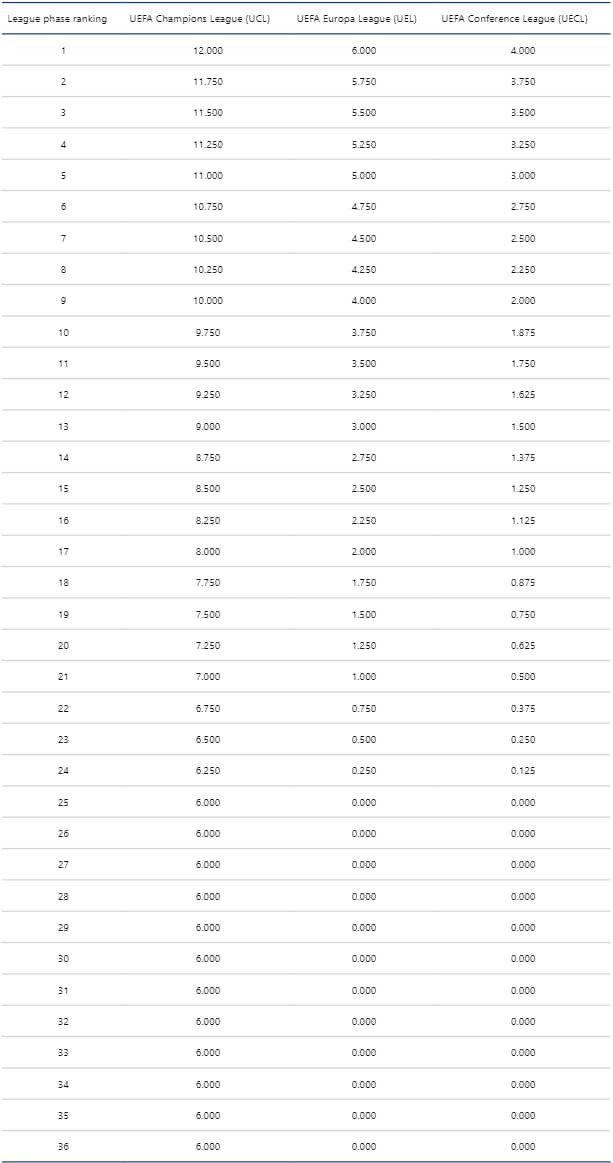Are you curious about how football teams are ranked globally? This comprehensive guide breaks down the complexities of the Football Fifa Rankings, explaining how they’re calculated and why they matter. CAUHOI2025.UK.COM provides clear, reliable information to help you understand the world of football rankings. Let’s dive into the ranking system, coefficient calculations, and bonus points!
The FIFA rankings, updated regularly, are based on a team’s performance in international matches, considering factors like match status, opponent strength, and regional confederation. This article will clarify how these elements contribute to a team’s overall ranking, influencing tournament seedings and global perceptions.
1. Understanding Football FIFA Rankings: An Overview
The Football FIFA Rankings are a system that ranks national football teams based on their performance. These rankings are updated periodically, usually monthly, and serve as a benchmark for comparing the strength and progress of different national teams. The rankings consider several factors, ensuring a comprehensive evaluation of each team’s performance. Key ranking components include: match results, match importance, opponent strength, and confederation strength. The rankings are used for tournament seeding and serve as a measure of a national team’s progress.
1.1. What are FIFA Rankings Used For?
FIFA rankings play a crucial role in various aspects of international football:
- Tournament Seeding: FIFA rankings are often used to seed teams in major international tournaments, such as the FIFA World Cup and continental championships. Higher-ranked teams are typically placed in higher pots, reducing their chances of facing other strong teams in the early stages of the competition.
- Qualification Draws: The rankings can influence the draws for qualification rounds for major tournaments, ensuring that stronger teams are distributed across different groups.
- Match Scheduling: Friendly matches are frequently arranged based on FIFA rankings, with teams aiming to play against opponents of similar strength to improve their ranking points.
- Public Perception: FIFA rankings significantly impact how national teams are perceived globally, influencing media coverage, fan expectations, and sponsorship deals.
- Performance Measurement: For national associations, FIFA rankings serve as a tool to measure the progress and effectiveness of their football programs. Improving a team’s ranking is often a key objective.
1.2. Historical Context of FIFA Rankings
The FIFA rankings were first introduced in December 1992, aiming to provide a transparent and objective measure of national team performance. The initial system was relatively simple, primarily based on points awarded for wins, draws, and losses. Over the years, the ranking system has undergone several revisions to improve its accuracy and address criticisms. Significant changes include:
- 1999 Revision: The system was revised to incorporate the importance of matches, with more points awarded for matches in major tournaments compared to friendlies.
- 2006 Revision: A new system was introduced that considered results from the previous four years, with more recent matches carrying greater weight.
- 2018 Revision: The current Elo-based system was adopted, which is more responsive to match results and opponent strength, providing a more accurate reflection of team performance.
2. Decoding the Ranking System: Key Components Explained
The current FIFA ranking system, adopted in 2018, is based on the Elo rating system, which is also used in chess and other sports. This system is designed to be more responsive and accurate in reflecting the relative strength of national teams.
2.1. The Elo Rating System in FIFA Rankings
The Elo rating system operates on the principle that a team’s ranking should increase when they win against a higher-ranked opponent and decrease when they lose to a lower-ranked opponent. The amount of points gained or lost depends on the relative rankings of the two teams and the match result.
2.1.1. Key Variables in the Elo Calculation
The change in a team’s ranking points after a match is determined by the following formula:
P = Pbefore + I * (R – E)
Where:
- P: The new ranking points after the match.
- Pbefore: The ranking points before the match.
- I: The importance of the match (weighting factor).
- R: The actual result of the match.
- E: The expected result of the match.
Each of these variables plays a crucial role in determining the final ranking points.
2.2. Match Importance (I)
The importance of a match is a weighting factor that reflects the significance of the game. FIFA assigns different weights to different types of matches:
- Friendly Matches (I = 10): These are exhibition games and have the lowest weighting.
- Qualifying Matches for Major Tournaments (I = 25): These matches are more important as they determine qualification for significant events.
- Major Tournament Matches (I = 40): Matches in the FIFA World Cup and continental championships carry a high weighting due to their prestige and competitive level.
- FIFA World Cup Finals Matches (I = 60): The most important matches, with the highest weighting.
2.3. Match Result (R)
The match result (R) is a straightforward indicator of the outcome of the game:
- Win (R = 1): The team wins the match.
- Draw (R = 0.5): The match ends in a draw.
- Loss (R = 0): The team loses the match.
2.4. Expected Result (E)
The expected result (E) is calculated based on the ranking difference between the two teams. The formula for calculating the expected result is:
E = 1 / (10-(dr/600) + 1)
Where:
- dr: The difference in ranking points between the two teams (i.e., the ranking of Team A minus the ranking of Team B).
This formula ensures that the expected result is always between 0 and 1, reflecting the probability of Team A winning the match based on their ranking relative to Team B.
2.5. Example Calculation
Let’s consider an example to illustrate how the FIFA ranking points are calculated. Suppose Team A (ranked 1500) plays a qualifying match against Team B (ranked 1300). Team A wins the match. Here’s how the points would be calculated:
- Pbefore (Team A): 1500
- I (Qualifying Match): 25
- R (Team A Wins): 1
- dr (Ranking Difference): 1500 – 1300 = 200
- E (Expected Result): 1 / (10-(200/600) + 1) ≈ 0.70
Using the formula:
P = 1500 + 25 (1 – 0.70) = 1500 + 25 0.30 = 1507.5
Therefore, Team A gains 7.5 ranking points from this win. Team B would lose a corresponding number of points.
3. Strengths and Weaknesses of the FIFA Ranking System
Like any ranking system, the FIFA rankings have both strengths and weaknesses. Understanding these can help in interpreting the rankings more accurately.
3.1. Strengths
- Objective: The FIFA ranking system is based on a mathematical formula, making it objective and transparent.
- Responsive: The Elo-based system is more responsive to recent results and opponent strength than previous systems.
- Comprehensive: It considers all international matches, providing a broad assessment of a team’s performance.
3.2. Weaknesses
- Home Advantage: The system does not explicitly account for home advantage, which can influence match results.
- Regional Differences: Some critics argue that the system does not fully account for the varying strengths of different regional confederations.
- Manipulation: Teams may strategically schedule friendly matches to optimize their ranking points, potentially distorting the true reflection of their strength.
4. Impact of FIFA Rankings on Tournament Seedings and Draws
The FIFA rankings have a significant impact on tournament seedings and draws, particularly for major international competitions like the FIFA World Cup and continental championships.
4.1. World Cup Seeding
The FIFA World Cup draw often uses the FIFA rankings to determine the seeding of teams. The top-ranked teams are placed in Pot 1 and distributed across different groups, reducing the likelihood of them facing each other in the group stage.
4.2. Qualification Draws
FIFA rankings are also used in the qualification draws for major tournaments. Teams are seeded based on their rankings, ensuring that stronger teams are spread across different groups to maintain a competitive balance.
4.3. Impact on Tournament Dynamics
The use of FIFA rankings in seeding and draws can significantly impact the dynamics of a tournament:
- Reduced Risk of Early Elimination: Higher-ranked teams have a better chance of avoiding strong opponents in the early stages, increasing their likelihood of advancing to the knockout rounds.
- Balanced Groups: Seeding ensures that groups are generally balanced, with a mix of strong and weaker teams.
- Potential for Upsets: Despite seeding, upsets can still occur, adding excitement and unpredictability to the tournament.
5. Examples of FIFA Ranking Influences
5.1. Case Study: FIFA World Cup
The FIFA World Cup provides a clear example of how rankings influence tournament outcomes. Top-ranked teams often receive favorable seeding, increasing their chances of success. However, the rankings are not always a perfect predictor of performance, as demonstrated by occasional upsets and unexpected results.
5.2. Continental Championships
Continental championships, such as the UEFA European Championship and the Copa América, also use FIFA rankings for seeding and draws. The rankings help ensure a fair distribution of strong teams, though they do not guarantee success, as team performance can vary based on form, injuries, and tactical approaches.
6. Alternatives to the FIFA Ranking System
While the FIFA ranking system is widely used, several alternative ranking systems aim to provide a more accurate assessment of national team performance.
6.1. Elo Ratings
The Elo rating system, which FIFA currently uses, is one of the most popular alternatives. It is used in chess and other sports and is known for its responsiveness to match results and opponent strength.
6.2. World Football Elo Ratings
The World Football Elo Ratings is an independent ranking system that uses a similar Elo-based approach but incorporates additional factors and historical data.
6.3. Other Ranking Systems
Other ranking systems, such as the UEFA coefficient system for club teams, use different methodologies to assess team performance, often considering factors like goals scored, match location, and historical results.
7. How to Improve Your Team’s FIFA Ranking
Improving a national team’s FIFA ranking requires a strategic approach that focuses on maximizing ranking points through various means. Here’s how:
7.1. Strategic Match Scheduling
- Prioritize Important Matches: Focus on qualifying matches for major tournaments and matches in major tournaments, as these carry higher weighting.
- Play Stronger Opponents: Schedule matches against higher-ranked opponents, as wins against these teams yield more ranking points.
- Avoid Unnecessary Friendlies: Minimize playing low-weighted friendly matches that do not significantly contribute to ranking points.
7.2. Performance Optimization
- Focus on Winning: Emphasize winning matches, as this is the most direct way to gain ranking points.
- Improve Goal Difference: While not directly factored into the ranking formula, a better goal difference can lead to more confidence and better results.
- Develop Team Cohesion: Build a cohesive and well-prepared team that can consistently perform at a high level.
7.3. Long-Term Planning
- Invest in Youth Development: Focus on developing young talent to ensure a pipeline of skilled players for the future.
- Hire Qualified Coaches: Appoint experienced and knowledgeable coaches who can implement effective strategies and tactics.
- Improve Infrastructure: Invest in football infrastructure, such as training facilities and stadiums, to create a conducive environment for player development.
8. The Future of Football FIFA Rankings
The Football FIFA rankings are continuously evolving, with ongoing discussions and potential revisions to improve their accuracy and relevance.
8.1. Potential Revisions
- Accounting for Home Advantage: Incorporating a factor for home advantage could provide a more accurate reflection of team strength.
- Adjusting for Regional Differences: Modifying the system to better account for the varying strengths of different regional confederations could address criticisms about fairness.
- Incorporating Goal Difference: Including goal difference as a factor could provide a more nuanced assessment of team performance.
8.2. Technological Advancements
- Data Analytics: Utilizing advanced data analytics to assess team performance and predict match outcomes could enhance the accuracy of the rankings.
- Artificial Intelligence: Implementing AI-driven algorithms could provide more sophisticated and dynamic ranking models.
8.3. Continued Relevance
Despite potential revisions, the FIFA rankings are likely to remain a key benchmark for assessing national team performance and influencing tournament seedings and draws. They serve as a valuable tool for measuring progress, driving competition, and engaging fans in the world of international football.
9. FAQ: Football FIFA Rankings
Q1: How often are FIFA rankings updated?
FIFA rankings are typically updated monthly.
Q2: What factors are considered in the FIFA ranking calculation?
The key factors include match results, match importance, expected results based on opponent strength, and the ranking points of the opponent.
Q3: Why did FIFA change its ranking system in 2018?
The change to the Elo-based system was aimed at making the rankings more responsive and accurate, reflecting team performance more effectively.
Q4: How can a team improve its FIFA ranking?
A team can improve its ranking by winning important matches, playing against higher-ranked opponents, and strategically scheduling matches to maximize points.
Q5: Are FIFA rankings a perfect measure of team strength?
While FIFA rankings provide a useful benchmark, they are not a perfect measure due to factors like home advantage and potential for manipulation.
Q6: How are FIFA rankings used in the World Cup?
FIFA rankings are used to seed teams in the World Cup draw, ensuring that top-ranked teams are distributed across different groups.
Q7: What is the importance of a match in the FIFA ranking system?
The importance of a match is a weighting factor that reflects the significance of the game, with major tournament matches carrying higher weights.
Q8: How is the expected result calculated in the FIFA ranking system?
The expected result is calculated based on the ranking difference between the two teams, using a formula that ensures the result is between 0 and 1.
Q9: What are some criticisms of the FIFA ranking system?
Criticisms include the system’s failure to fully account for home advantage and regional differences, as well as the potential for strategic manipulation.
Q10: What are some alternative ranking systems to the FIFA rankings?
Alternative ranking systems include the Elo ratings, World Football Elo Ratings, and other methodologies that incorporate various factors and historical data.
Conclusion
Understanding the Football FIFA rankings provides valuable insights into the world of international football. By grasping how these rankings are calculated and used, you can better appreciate the dynamics of tournaments, the strategies of national teams, and the overall landscape of global football. Stay informed and engaged with CAUHOI2025.UK.COM, your go-to source for reliable information and expert analysis on sports and beyond.
Want to learn more about football rankings or have other questions? Visit CAUHOI2025.UK.COM today and explore our comprehensive resources. If you have specific queries, don’t hesitate to reach out for expert advice tailored to your needs.
 FIFA World Rankings Explained
FIFA World Rankings Explained
Alternative text: Table showing how bonus points are distributed to teams in the UEFA Champions League, UEFA Europa League, and UEFA Conference League based on their final position in the league phase rankings, designed to enhance understanding of ranking calculation with semantic keywords and LSI.
Contact Us:
Equitable Life Building, 120 Broadway, New York, NY 10004, USA
Phone: +1 (800) 555-0199
Website: CauHoi2025.UK.COM

